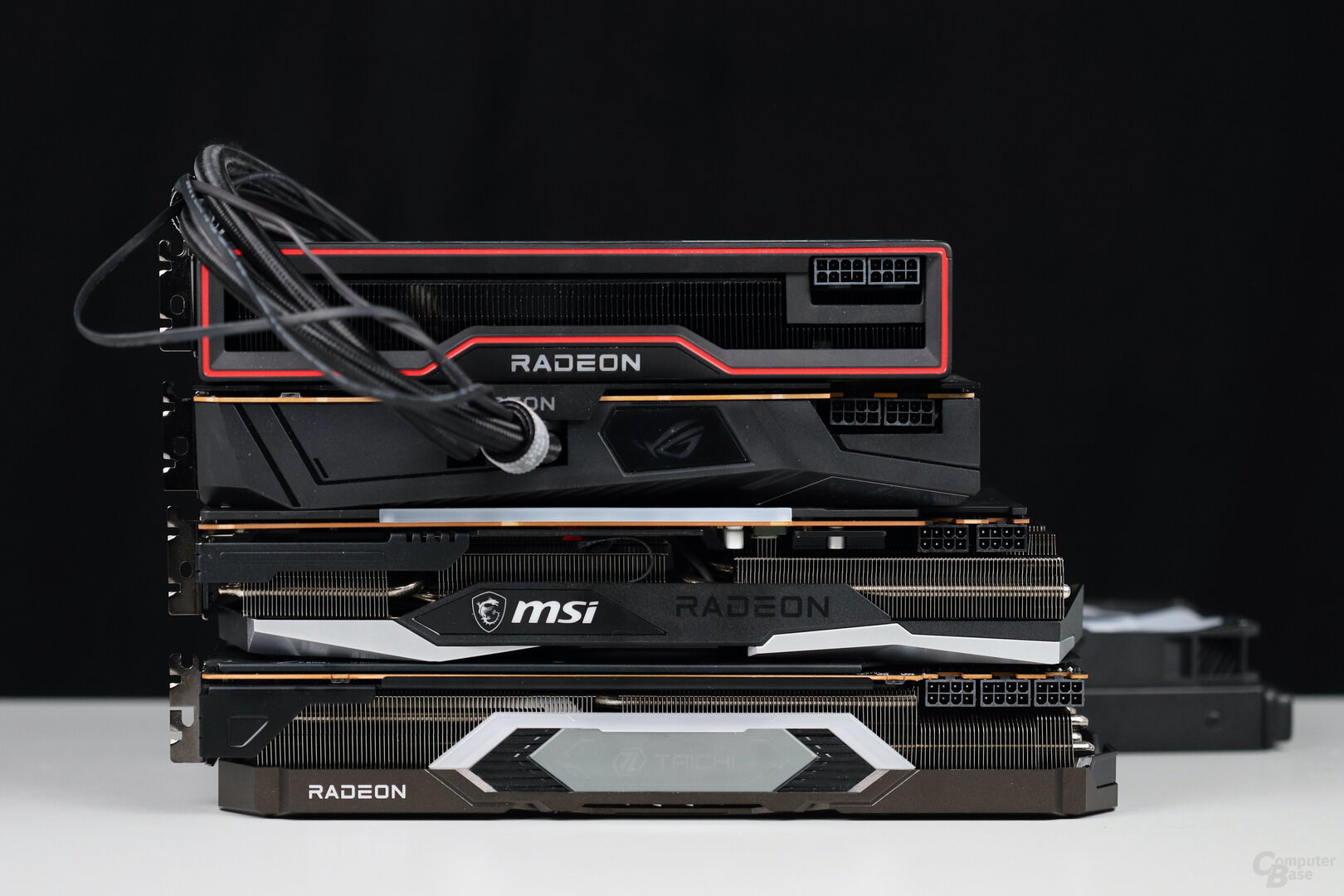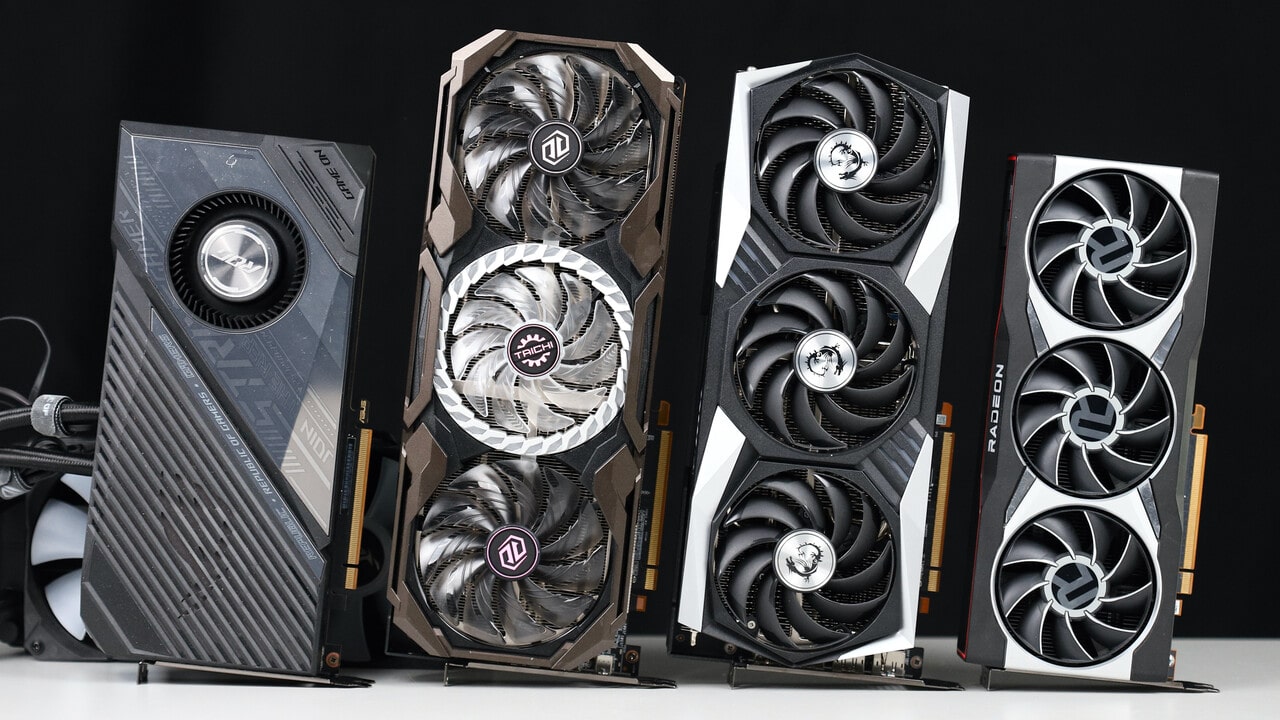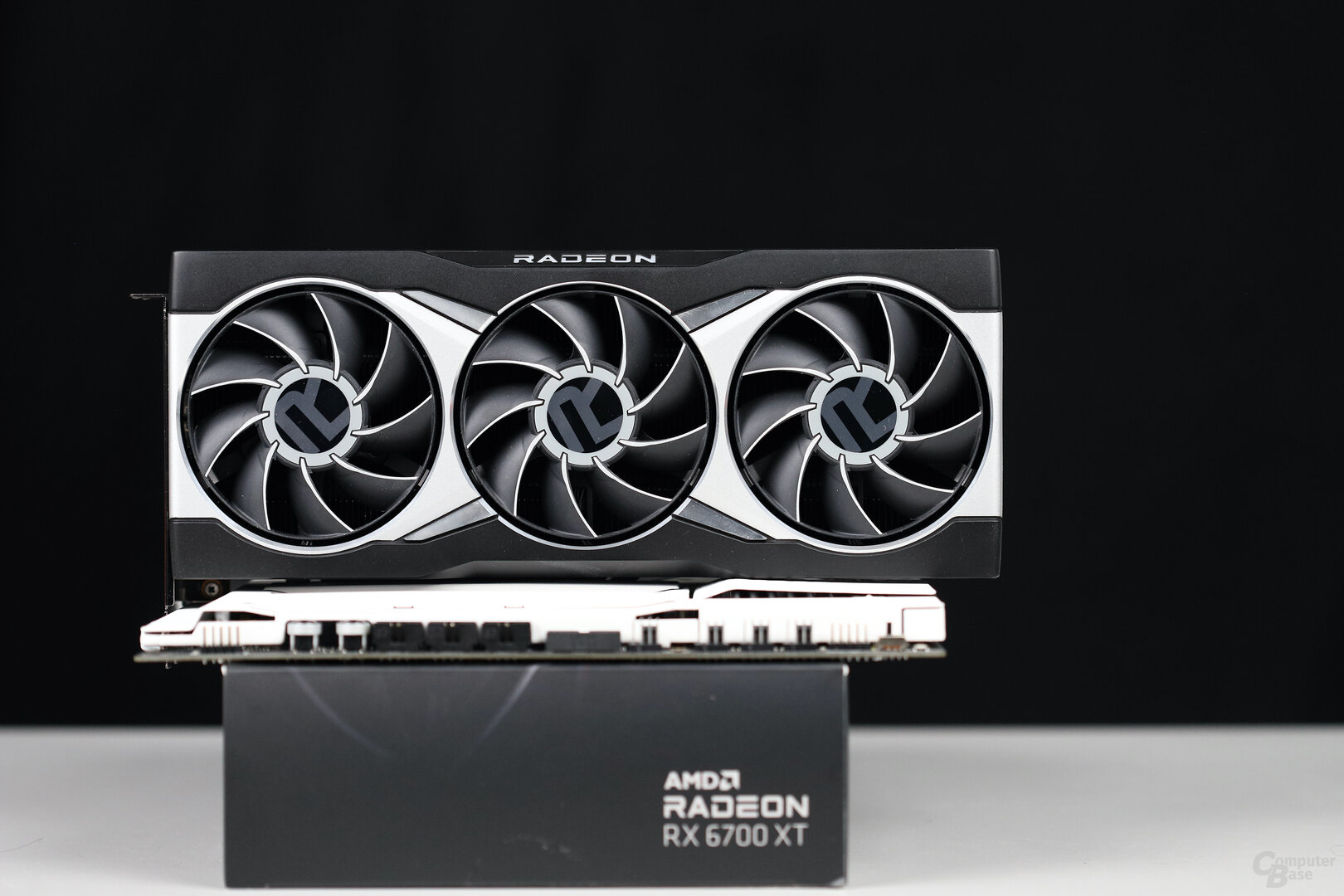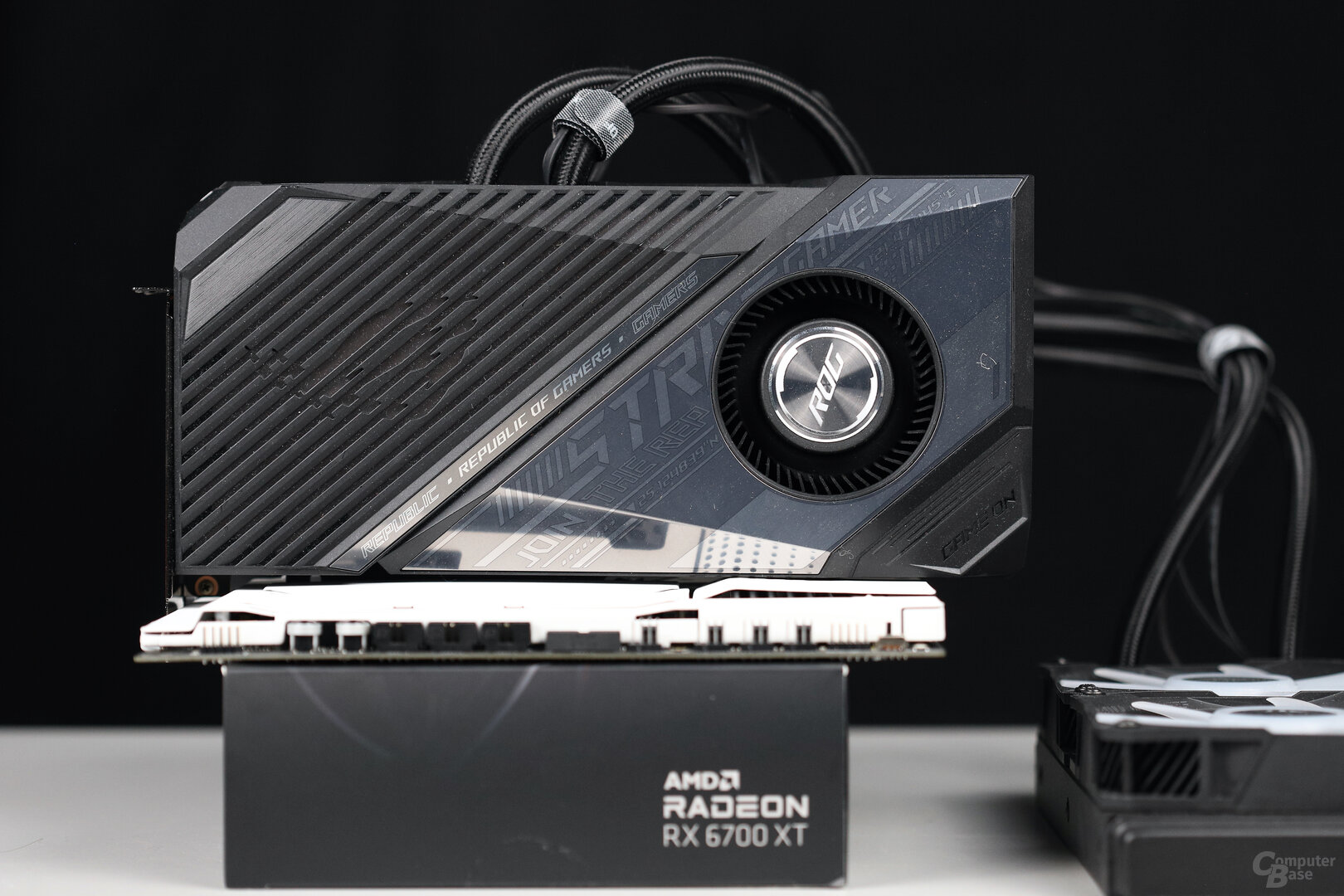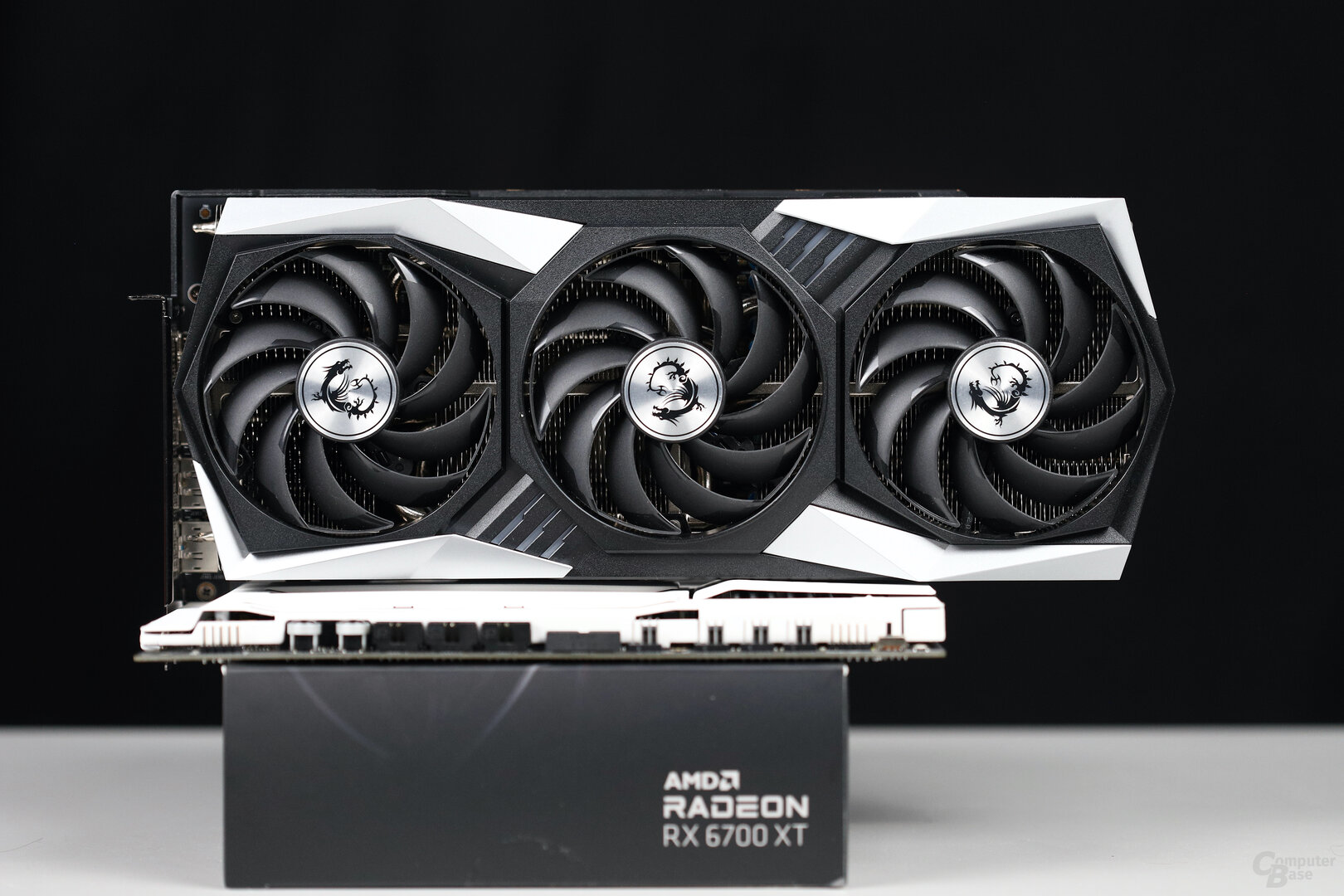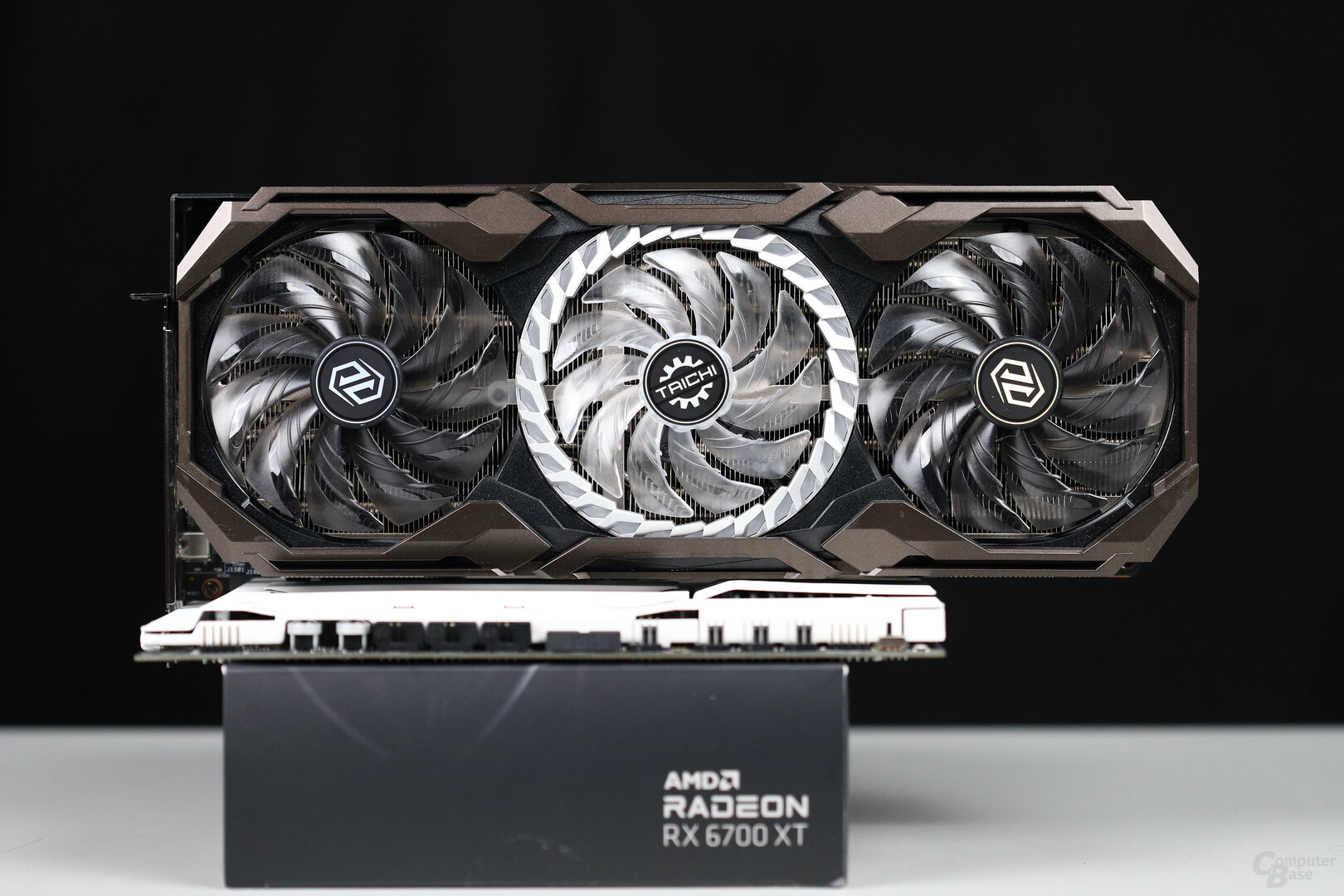RX-6800-XT Customs from ASRock, Asus and MSI tested
: Test |CUP | Specs |Config
With ASRock Taichi, Asus ROG Strix OC Liquid and MSI Gaming X, ComputerBase tested three more custom designs of the Radeon RX 6800 XT. ASRock and MSI rely on air, Asus on all-in-one water cooling. All three have to prove themselves against PowerColor Red Devil, Sapphire Nitro+, XFX Merc 319 and the reference design.
Six custom designs of the Radeon RX 6800 XT tested
With RDNA 2, AMD finally has competitive graphics cards back on the market after years of absence. The Radeon RX 6800 XT (XT) is the opponent of the GeForce RTX 3080 (test), both of which are available as a reference card and in the form of numerous custom designs. ComputerBase has already looked at three custom models of the Radeon graphics card: PowerColor Radeon RX 6800 XT, Sapphire Radeon RX 6800 XT Nitro+ and XFX Radeon RX 6800 XT Merc 319 (test).
This article is followed by the Asus Radeon RX 6800 XT Strix LC – and thus a model with AiO water cooling -, the ASRock RX 6800 XT Taichi and the MSI Radeon RX 6800 XT Gaming X. Whoever has developed the best custom design clarifies themselves in the following sections. If you are more interested in the Radeon RX 6700 XT, you will find measured values from six custom designs in the article RX 6700 XT: Custom designs in the test: Asus, MSI, (2 ×) PowerColor, Sapphire and XFX in comparison.
But the availability…
The obligatory note that the Radeon RX 6800 XT can hardly be bought at the moment and if it can, then only at horrendously high prices should not be missing. This is not only the case with this series, but with all graphics cards, regardless of whether they are from AMD or Nvidia, whether new or old, whether cheap or expensive. And there is no improvement in sight.
The ASRock Radeon RX 6800 XT Taichi at a glance
ASRock is still quite new to the graphics card business and has developed quite a hum with the Radeon RX 6800 XT Taichi. It is the largest custom design in this test. This gives hope for a high cooling performance.
What at first glance looks like a metal cover turns out to be plastic in the end. The RGB lighting is worth mentioning, because the middle fan is brightly lit, while the outer two remain dark. In addition, the side of the graphics card is illuminated, which can also be seen when installed.
The Radeon RX 6800 XT Taichi comes with two different BIOS versions. By default, the faster OC-BIOS is active with a TGP of 289 watts, the alternative BIOS offers the value of the reference design with 255 watts. It is also worth mentioning that ASRock uses three 8-pin power connectors instead of the two like all other custom designs. This is not necessary, but it is definitely relevant before the purchase.
The Asus Radeon RX 6800 XT Strix LC at a glance
The Radeon RX 6800 XT Strix LC is not cooled in the classic way by Asus, but relies on a factory-installed all-in-one water cooling system with a 240 mm radiator. However, the design cannot do without a fan on the graphics card itself: A radial fan should also keep the power supply and memory at low temperatures there. The water cooler, on the other hand, is only responsible for the Navi 21 GPU.
The two 120 mm fans that blow the air through the radiator, as well as the radial fan, stand still at low temperatures. This means that the only source of noise on the Windows desktop is the pump. The hoses are pleasantly long and don’t behave too stubbornly. Visually and haptically, the graphics card with the very large plastic radiator cover does not look very high quality, but this applies to all AiO GPU solutions.
Asus relies on a lot of RGB for the Radeon RX 6800 XT Strix LC, because in addition to the radiator fans, the front of the graphics card cooler also lights up. There are two different BIOS versions, but these only affect the fan speeds. The louder performance BIOS is activated ex works. The TGP of the graphics card is 290 watts, 45 watts more than AMD’s reference specifications.
The MSI Radeon RX 6800 XT Gaming X at a glance
With the Radeon RX 6800 XT Gaming X, MSI relies on the convincing Gaming X cooler with three fans instead of the disappointing variant with two fans on the MSI Radeon RX 6700 XT Gaming X (test). Gaming X at MSI currently also means that the look and feel of the graphics card are average at best, because the cooling system does not offer more than a lot of plastic apart from the actual heat sink.
The RGB lighting of the Radeon RX 6800 XT Gaming X is also not of high quality, because the decorative strip on the side uses too few LEDs that are clearly visible. MSI does without a second BIOS on the Radeon RX 6800 XT Gaming X.
Detailed specifications in comparison
The custom designs in image comparison
Clock rates under constant load in games
Unsurprisingly, the Asus Radeon RX 6800 XT Strix LC clocks the highest under load in games and is also superior to the already tested custom designs from PowerColor, Sapphire and XFX. Significantly more than 2,400 MHz in every tested game is an announcement that no other card manages. In Horizon Zero Dawn, the graphics card even reaches an average of 2,491 MHz (+191 MHz for the reference) and is therefore hardly far from the 2,500 MHz mark. Only in Doom Eternal is the clock a bit lower, but still very high at 2,436 MHz (+329).
The other two partner cards cannot keep up. The MSI Radeon RX 6800 XT Gaming XT runs at 2,376 MHz (+76 MHz) in Horizon Zero Dawn and at 2,335 MHz (+179 MHz) in Doom Eternal. The ASRock Radeon RX 6800 XT Taichi can claim 2,404 MHz (+104 MHz) in Horizon Zero Dawn and 2,281 MHz (+125 MHz) in Doom Eternal with the OC-BIOS, with the Silent-BIOS it is still 2,308 MHz ( +8MHz) and 2281MHz (+125MHz).
The differences with the fastest BIOS versions are interesting, because all three graphics cards actually offer the same TGP with around 290 watts. The Asus model probably simply shows the advantage of the significantly lower temperatures, which then ensure a higher frequency, and the PCB may also be more efficient. The test subjects from ASRock and MSI, on the other hand, are close together, which fits the same TGP and comparable cooling.
